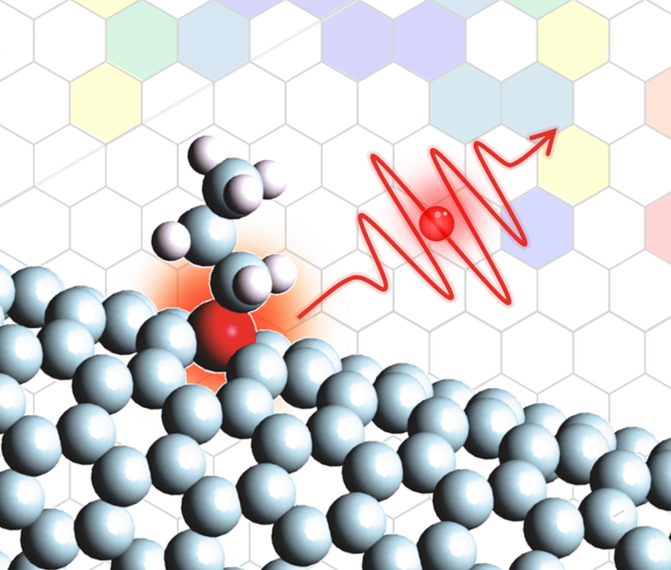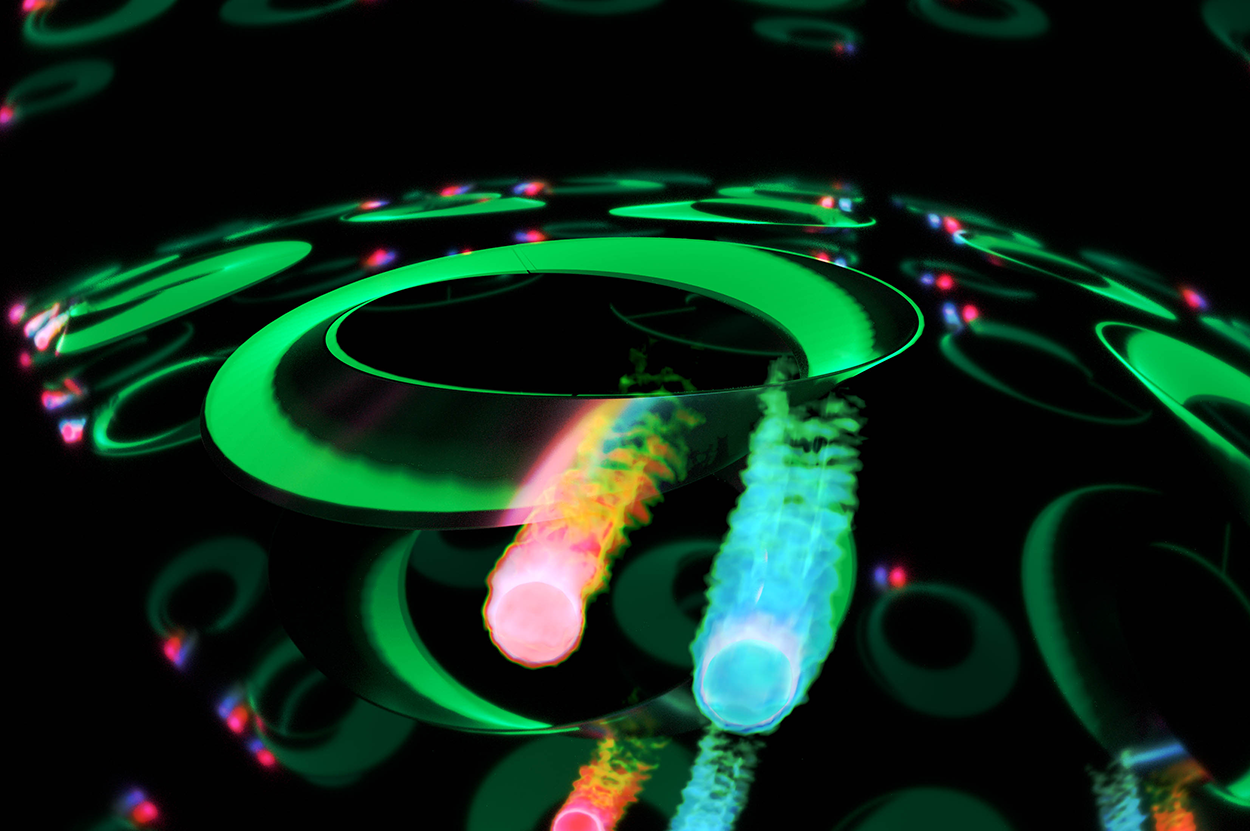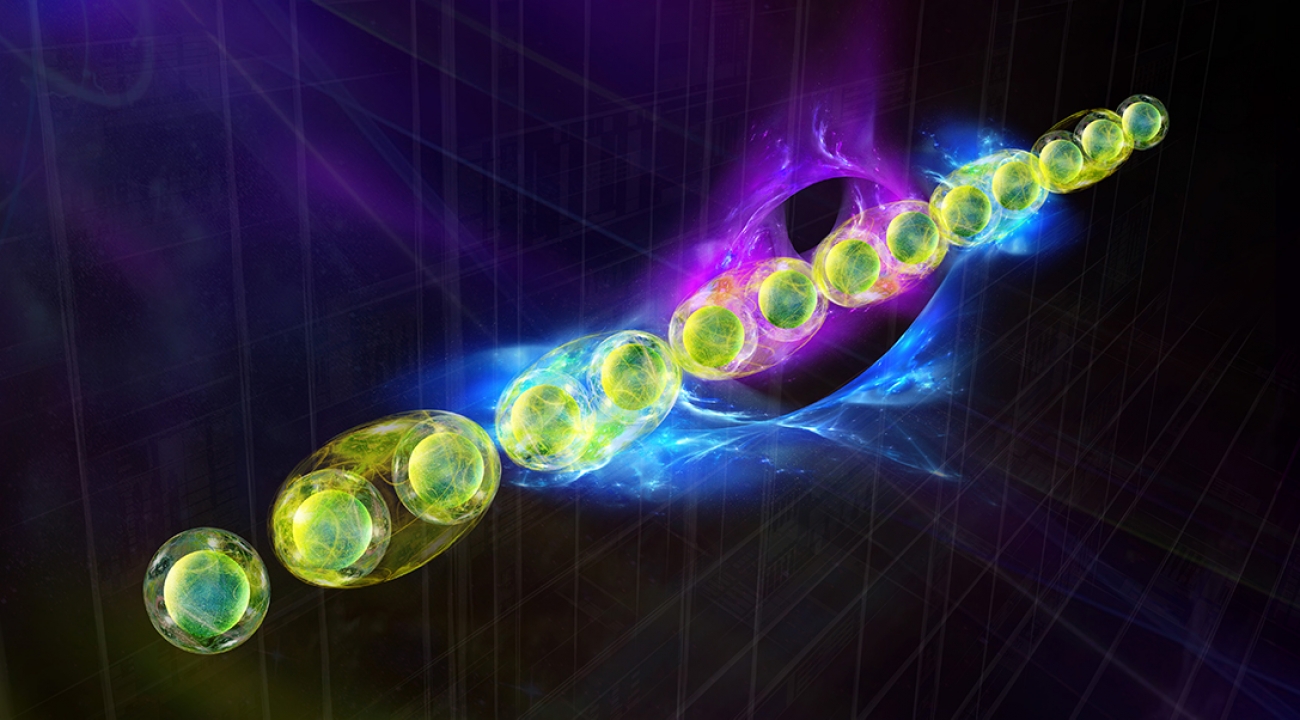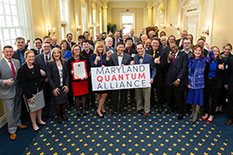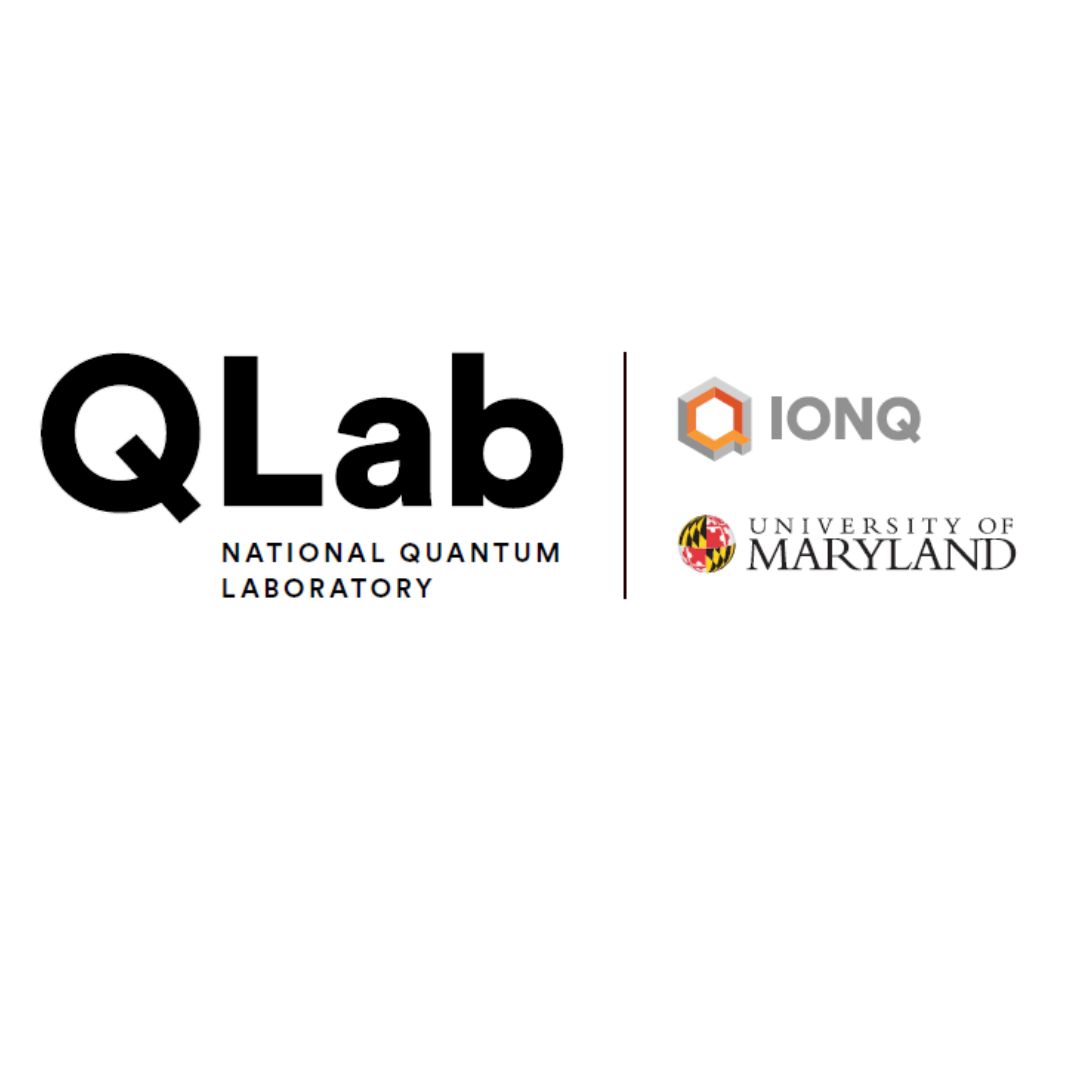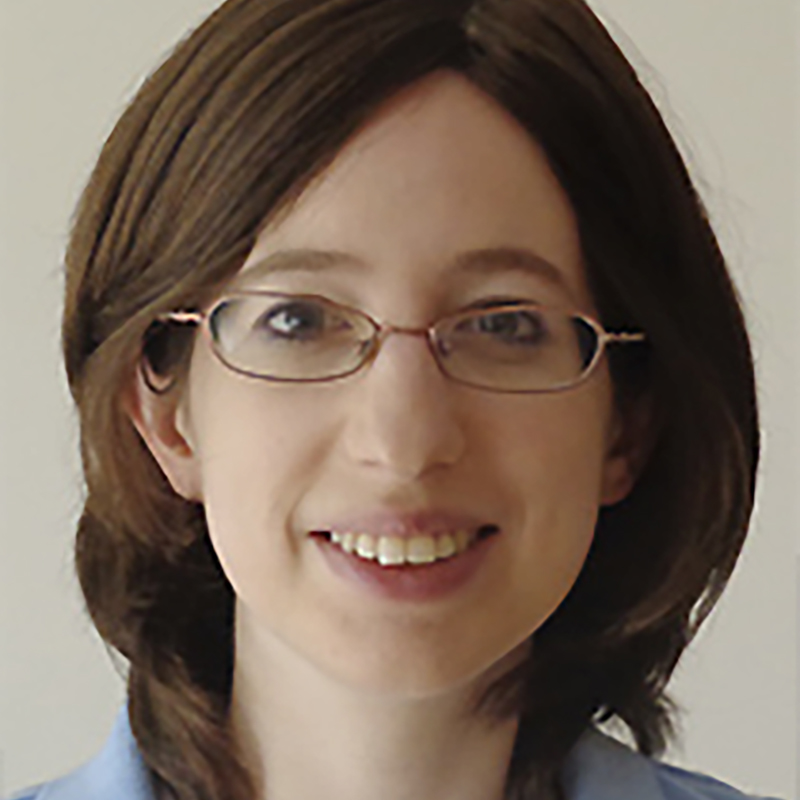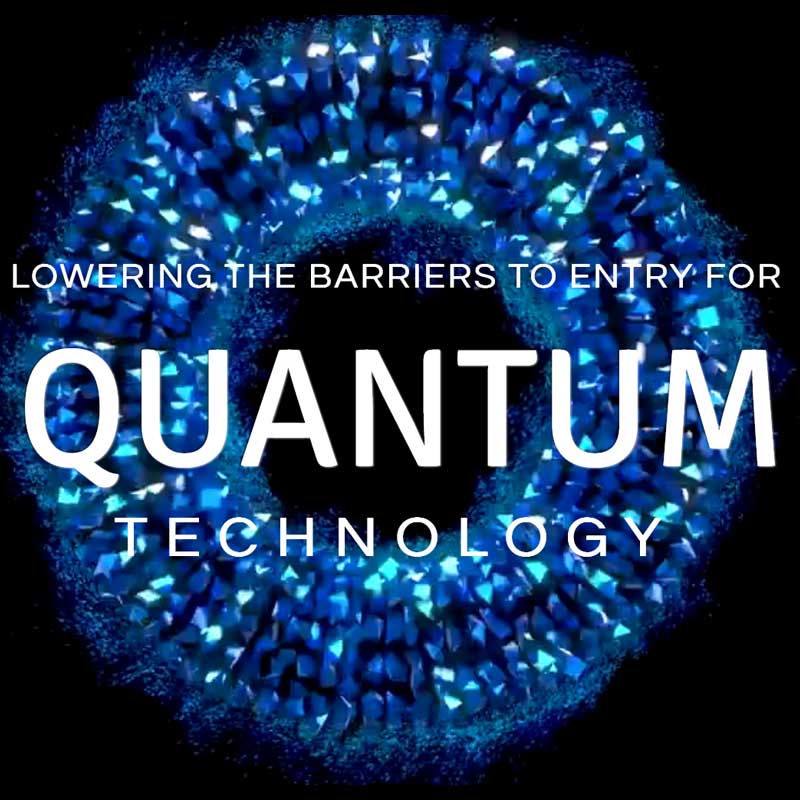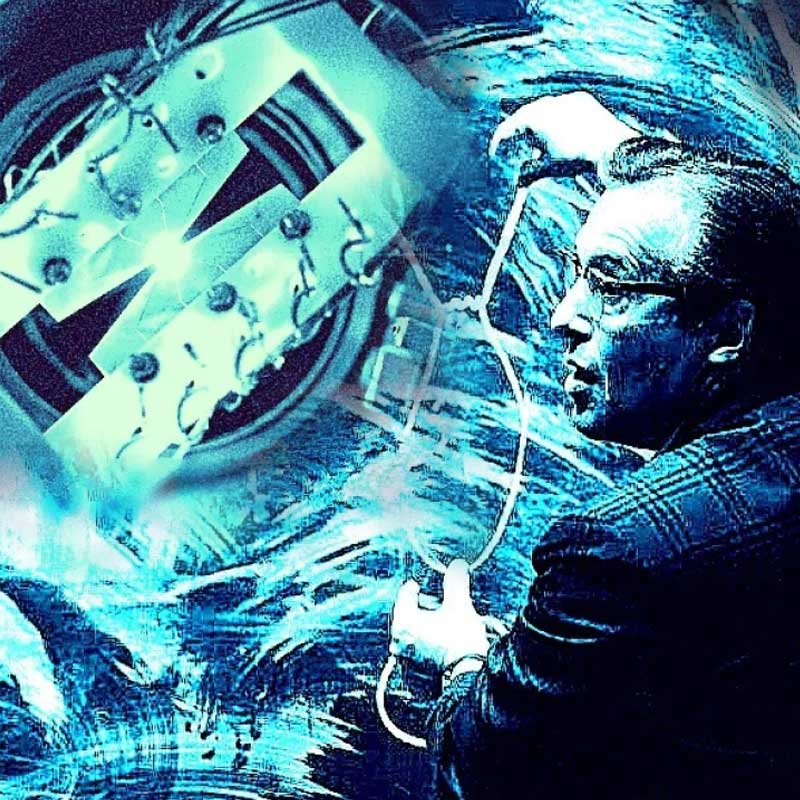News Story
Partnering for Quantum Leaps
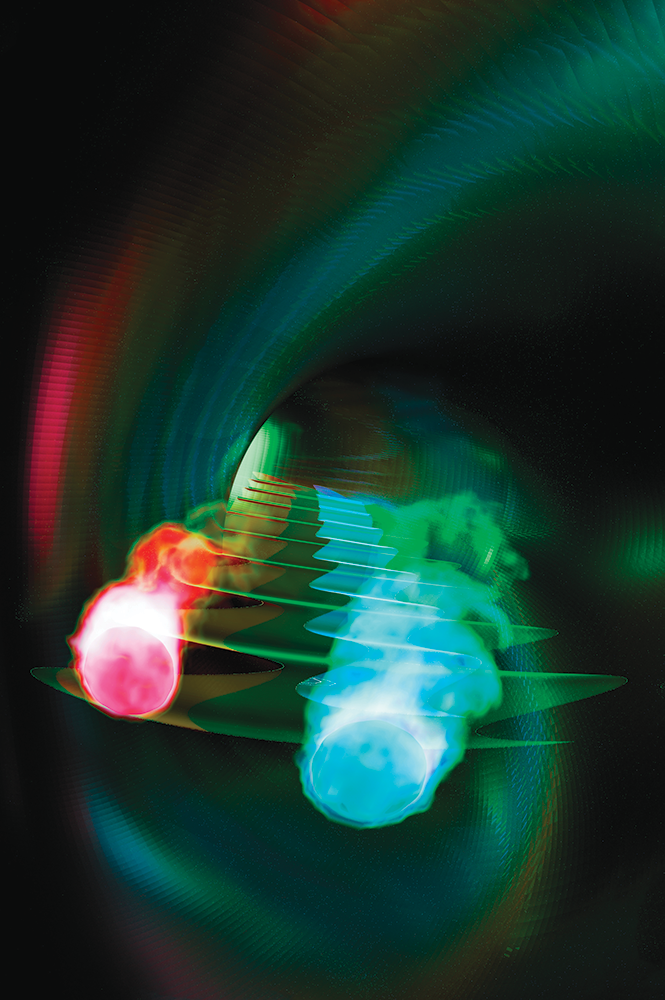
Researchers configure silicon rings on a chip to emit high-quality photons for use in quantum information processing. Image: Emily Edwards
In the 21st century, quantum mechanics—which studies the often counterintuitive behaviors of atoms, electrons, photons, and subatomic particles—spun off innovations ranging from telecommunications to lasers to MRI machines. Those technologies are based largely on quantum equations that describe particles as waves, says Mohammad Hafezi, associate professor of electrical and computer engineering and physics at the University of Maryland.
“Now we are expecting another quantum revolution, with many interesting applications in computation, communication, and sensing,” says Hafezi. This second revolution builds on other, stranger aspects of quantum mechanics such as superpositioning, which describes particles as existing in several separate quantum states at the same time.
Hafezi, who also holds appointments in UMD’s Joint Quantum Institute (JQI) and Institute for Research in Electronics and Applied Physics (IREAP), studies the fundamental behaviors of light–matter interactions down to the single-photon level. “We now can actually manipulate these things at the quantum level,” he says. “It’s time to ask the question, can we use these single-atom, single-electron, single-photon manipulations to make useful devices?”
He and Edo Waks, professor of electrical and computer engineering at the A. James Clark School of Engineering, are among the UMD researchers helping to form this second revolution, with groundbreaking work on devices for quantum information processing and quantum networks.
For Hafezi and Waks, like many other UMD researchers, partnering with the U.S. Army Research Laboratory (ARL) is key. “Our collaborations offer organic ways to take the flow of knowledge and interesting technologies here in the university to the federal labs,” Hafezi says.
Pairing Up in Photonics
In one collaboration, published in Nature in September 2018, Hafezi worked with ARL Research Scientist Elizabeth Goldschmidt to demonstrate an innovative way to produce nearly perfectly matched pairs of photons in a room-temperature semiconductor chip—an important advance for research in quantum communications.
Hafezi and JQI Postdoctoral Researcher Sunil Mittal provided proficiency in integrating topological physics with light, while Goldschmidt provided her expertise in the characterization of quantum light. The effort also benefited from the use of nanowire detectors (superconducting devices that detect individual photons with very high efficiency) provided by ARL Researcher Qudsia Quraishi.
Goldschmidt also studies glasses that are doped with rare-earth ions that basically behave as isolated, impure atoms embedded in the glass. Waks—who also holds appointments with JQI and IREAP—works with her to study ways to couple these rare-earth ions into photonic devices on the nanoscale. “We’re looking to make devices out of those materials that can create strong interactions between their atoms and light,” Waks says.
“The University of Maryland is a world-leading hub of quantum research, with this critical mass of researchers in these three big centers to tackle quantum challenges from all directions.”
Professor Edo Waks
Quantum Networking
Waks also is principal investigator of the Center for Distributed Quantum Information (CDQI), funded by ARL. CDQI brings together UMD engineers and scientists, along with researchers from a number of other academic institutions and federal agencies, to advance quantum networking technologies.
The program aims to integrate a diverse set of quantum computing technologies with quantum communications devices to form quantum networks. “CDQI is laying out the groundwork for these local networks that eventually could become part of a national quantum network,” Waks says.
Much like today’s distributed computing networks, quantum networks will enable multiple computers to team up to handle tough computing tasks. “Any scalable quantum computer built on today’s architectures probably will be configured as a quantum network with modular components connected by photonic links,” Waks says. Additionally, quantum networks are expected to provide secure communications, new types of quantum sensing, and other benefits.
Allying with ARL
“Our interactions with ARL are very close,” says Waks. “ARL gets access to the resources of the University of Maryland, including our graduate students and postdocs. And, several ARL scientists also have labs here on campus, which provide a very easy way for us to interface with our ARL collaborators.”
ARL is one of several federal agencies with tight connections to UMD’s three centers for quantum research, says Robert Briber, associate dean for research at the Clark School.
Founded in 2006, JQI focuses on coherent quantum phenomena and includes researchers from UMD and the National Institute of Standards and Technology (NIST). In 2014, NIST and UMD launched the Joint Center for Quantum Information and Computer Science (QuICS), which works on the challenges in programming quantum computers.
“We’re now in process of building a third arm, the Quantum Technology Center (QTC), which will handle the quantum engineering you need to make all this work,” Briber says. In November, UMD broke ground on the E.A. Fernandez IDEA Factory, which will host labs for QTC and other groups.
“The University of Maryland is a world-leading hub of quantum research, with this critical mass of researchers in these three big centers to tackle quantum challenges from all directions,” Waks says. “And we’re linked with strong surrounding efforts in government labs like ARL and NIST. We anticipate that the ARL and UMD collaboration will significantly increase over time.”
Published May 7, 2019
